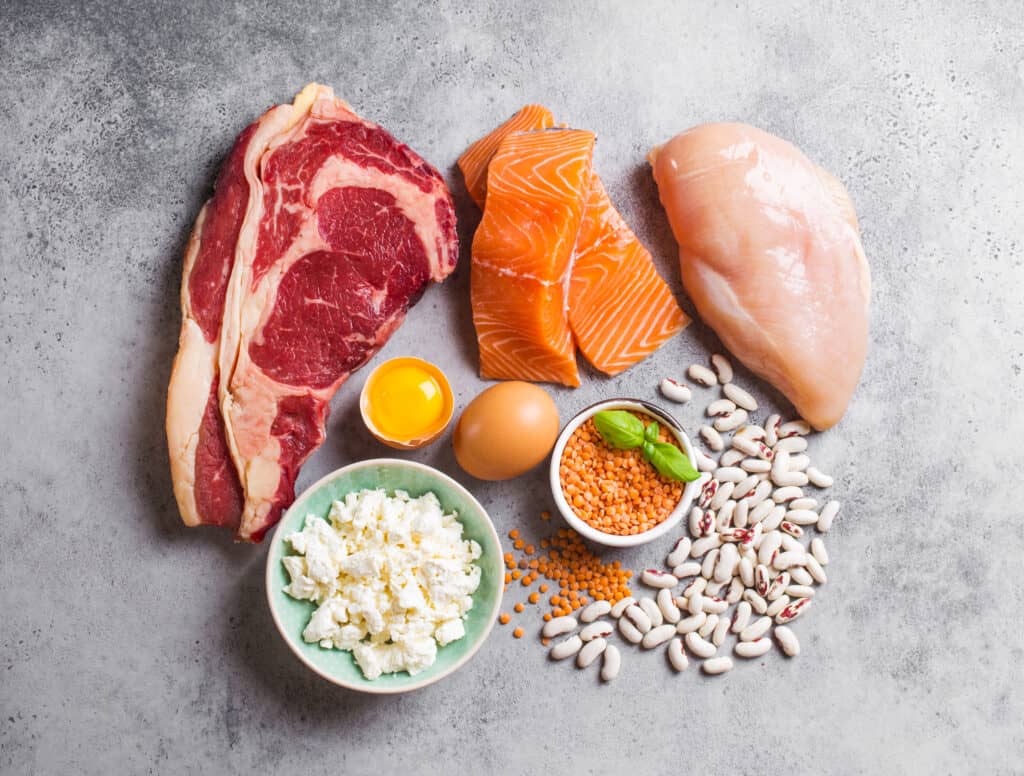Twenty-five years ago, there was plenty of skepticism about protein.
After all, bodybuilders ate lots of it—and they experimented with all kinds of “questionable” things.
Plus, the late 1990s ushered in the rise of high-protein diets for weight loss—an approach many health experts then labeled as “unsafe.”
Over the years, much of the hand-wringing about protein has faded. (And some of those same experts now advise people to “eat more protein.”)
But one claim just won’t seem to die: “Protein is bad for your kidneys.”
Spoiler: It’s a myth.
Here’s why: The concern about high protein and kidneys began because doctors tell people with poorly functioning kidneys—usually from pre-existing kidney disease—to eat a low-protein diet.
But, but, but…
There’s a big difference between avoiding protein because your kidneys are already damaged versus protein actively damaging healthy kidneys.
It’s the difference between jogging with a broken leg and jogging with a perfectly healthy leg.
Jogging with a broken leg is a bad idea.
Doctors would probably tell you not to do that. But does jogging cause legs to break? No.
Same with protein and kidneys.
Eating more protein does increase how much your kidneys have to work, just like jogging increases how much your legs have to work.
But protein hasn’t been shown to cause kidney damage—again, just like jogging isn’t going to suddenly snap your leg like a breadstick.
In fact, clinical studies show people can eat up to 4.4 g of protein per kg body weight (or 2 g per pound) without any short term health problems. (Granted, that’s a very high intake and very few people would ever voluntarily consume that much.)
How Much Protein Do You REALLY Need?
For the average person eating a standard diet, protein deficiency isn’t a concern.
However, “not deficient” doesn’t mean optimal.
It just means getting enough protein to maintain function and prevent malnutrition.
For sedentary, generally healthy adults, about about 0.4 g per pound is enough to cover basic daily requirements. (That’s about 60 grams for a 150-pound person.)
But because protein is involved in so many essential processes, protein needs can go up you’re:
- Training hard frequently or have a heavy physical job
- Injured, sick, or recovering from surgery
- Older (because protein digestion tends to reduce with age, so you need more to meet requirements)
- Trying to lose body fat but still maintain muscle (or you’re trying to maximize muscle)
The basic recommendation for protein intake is 0.8 grams per kilogram (or around 0.36 g per pound) of body mass in untrained, generally healthy adults. For instance, a 150 lb (68 kg) person would consume around 54 grams a day.
However, this amount is only to prevent protein deficiency. It’s not necessarily optimal, particularly for people such as athletes who train regularly and hard.
For people doing high intensity training, protein needs might go up to about 1.4-2.0 g/kg (or around 0.64-0.9 g/lb) of body mass.2 Our hypothetical 150 lb (68 kg) person would thus need about 95-135 g of protein per day.
These suggested protein intakes are what’s necessary for basic protein synthesis (in other words, the creation of new proteins from individual building blocks). The most we need to consume throughout the day for protein synthesis probably isn’t more than 1.4 – 2.0 g/kg.
But wait – there’s more!
Beyond the basics of preventing deficiency and ensuring a baseline of protein synthesis, we may need even more protein in our diets for optimal functioning, including good immune function, metabolism, satiety, weight management and performance.3 In other words, we need a small amount of protein to survive, but we need a lot more to thrive
Don’t worry about the numbers.
Instead, just shoot for 1-2 palm-sized portions of protein at each meal.
Of course, if you’re not even close to that now, you’ll probably find it difficult to get there overnight.
So start from wherever you are, and try to eat just a little bit more.
For example, if you only have 1 palm-sized position of protein a day, try to have 2.
Or if, like many people, you typically get most of your protein at dinner, can you focus on adding a palm to your breakfast and/or lunch?
Try it for 2 weeks, and if it’s working for you—that is, you enjoy it, you’re moving you closer to your goals, and it’s not disrupting your life—build on your success.
That’s how you make lasting progress.

